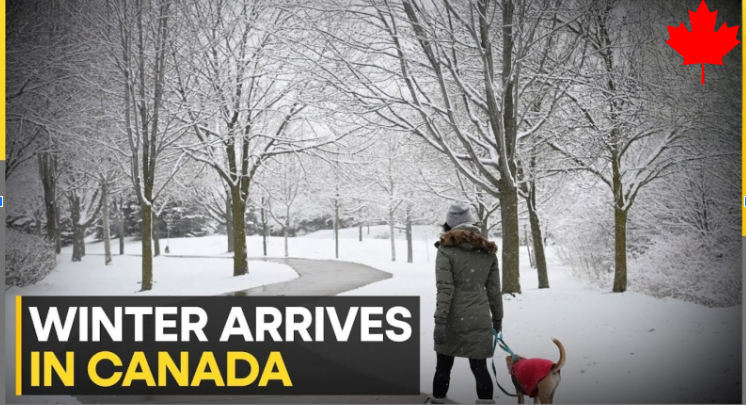Canadian winters are famous for snow‑packed streets, icy sidewalks, and bitter windchill, and that makes one question very important for families: will schools close tomorrow or not?
Snow Day Predictor tools and modern Snow Day Calculators are becoming essential across Canada, helping parents, students, and teachers understand school‑closure chances long before the official announcement arrives.
Why Snow Days Work Differently in Canada
Unlike some countries where national rules are strict, Canada handles snow days mostly through local school boards and transportation authorities.
Each province and even each board can have its own tolerance for snow, ice, and extreme cold, depending on how well roads are cleared and how used to winter the community is.
Because of these big regional differences, families can’t just look at a basic weather app and guess; they need tools that understand Canadian patterns and local policies.
This is where a dedicated Canadian‑friendly platform like the main Snow Day Calculator really helps, because it is designed to estimate school‑closure risk based on real school behaviour, not just snow totals.
What a Snow Day Predictor Actually Measures
A Snow Day Predictor is not only checking “will it snow,” but “will it be safe to open schools.”
To do that, it typically looks at:
- Snowfall amount and intensity
- Risk of ice and freezing rain
- Morning road and sidewalk conditions
- Wind speed and windchill
- Timing of the heaviest snow (overnight vs afternoon)
- How often local boards have closed for similar storms in the past
By combining these factors, the predictor outputs a percentage such as “80% chance of snow day” or a risk category such as low, medium, or high.
Instead of guessing from a radar image, parents get a clear, practical number they can use to start planning.
How Snow Day Calculator Helps Canadian Families
The Canadian winter calendar can change overnight, and that is tough for working parents and students preparing for exams or projects.
Using the AI‑driven Snow Day Calculator, families can enter their postal code and instantly see how likely it is that schools will close the next day.
This early signal makes it easier to:
- Arrange backup childcare or ask to work from home
- Prepare for remote learning or rescheduled tests
- Plan safe travel and avoid unnecessary commuting in bad weather
- Lower stress for kids who are anxious or excited about possible snow days
For educators, seeing an elevated closure probability can also help them decide whether to move tests, assignments, or important events away from high‑risk days.
Regional Patterns: East, West, and Prairies
Canada is huge, and snow days do not mean the same thing in every province.
In Atlantic Canada and parts of Ontario and Quebec, heavy snow plus coastal or lake‑effect systems can push boards to close more often, especially when wind and ice mix in.
In the Prairie provinces, schools may stay open even in extreme cold, because infrastructure and local habits are built around harsh winters.
Northern territories may face blizzard conditions and very low visibility, which can make bus routes and rural roads too dangerous even when communities are used to snow.
In contrast, some urban centres with strong snow‑removal capacity keep schools open more frequently, relying on public transit and quickly clearing main roads.
A good Canada‑aware Snow Day Predictor needs to understand all these differences to give meaningful results.
Why AI Matters Inside the Algorithm
Modern snow‑day engines often use machine learning to become smarter over time.
They compare thousands of past storms with actual closure decisions from local boards, so the algorithm can “learn” how a specific region reacts to certain combinations of snow, ice, and wind.
When new forecast data arrives, the system checks: “What usually happened before in this region under similar conditions?” and adjusts the percentage accordingly.
This is why checking a specialized guide such as the official Snow Day Predictor guide explains how weather inputs, school policies, and regional weights all blend together in the background.
Climate Change and the Future of Canadian Snow Days
Climate studies show that some Canadian regions are seeing shifts in the length and intensity of winter.
Certain cities are losing traditional snow‑and‑ice days and getting more rain or “slushy” conditions, while other areas are still experiencing strong snow cover.
For snow‑day prediction, that means the models must constantly update, because the weather patterns that triggered closures ten years ago may not appear in exactly the same way today.
Snow Day Calculators that rely on static rules quickly become outdated; those that integrate new climate and historical data can keep predictions relevant for changing Canadian winters.
As storm tracks, freeze‑thaw cycles, and rainfall patterns evolve, AI‑based predictors are likely to be even more important tools for parents and schools.
Best Practices for Canadian Users
To get the best results from any Snow Day Predictor in Canada, a few habits make a big difference.
Always enter the correct postal code and, if the tool allows, choose your approximate School district or region rather than just the nearest city name.
Never rely on a single source; combine your snow‑day prediction with school‑board emails, text alerts, or website notices for the final decision. And during the busy winter season, following the official Snow Day Calculator blog can keep you updated on new features, Canadian case studies, and tips for handling school closures smoothly.
Final Thoughts
Snow days will always be part of Canadian life, but guesswork does not have to be.
With tools like Snow Day Predictor and the dedicated Snow Day Calculator, families across Canada can turn uncertain winter mornings into planned, safer, and less stressful days.
